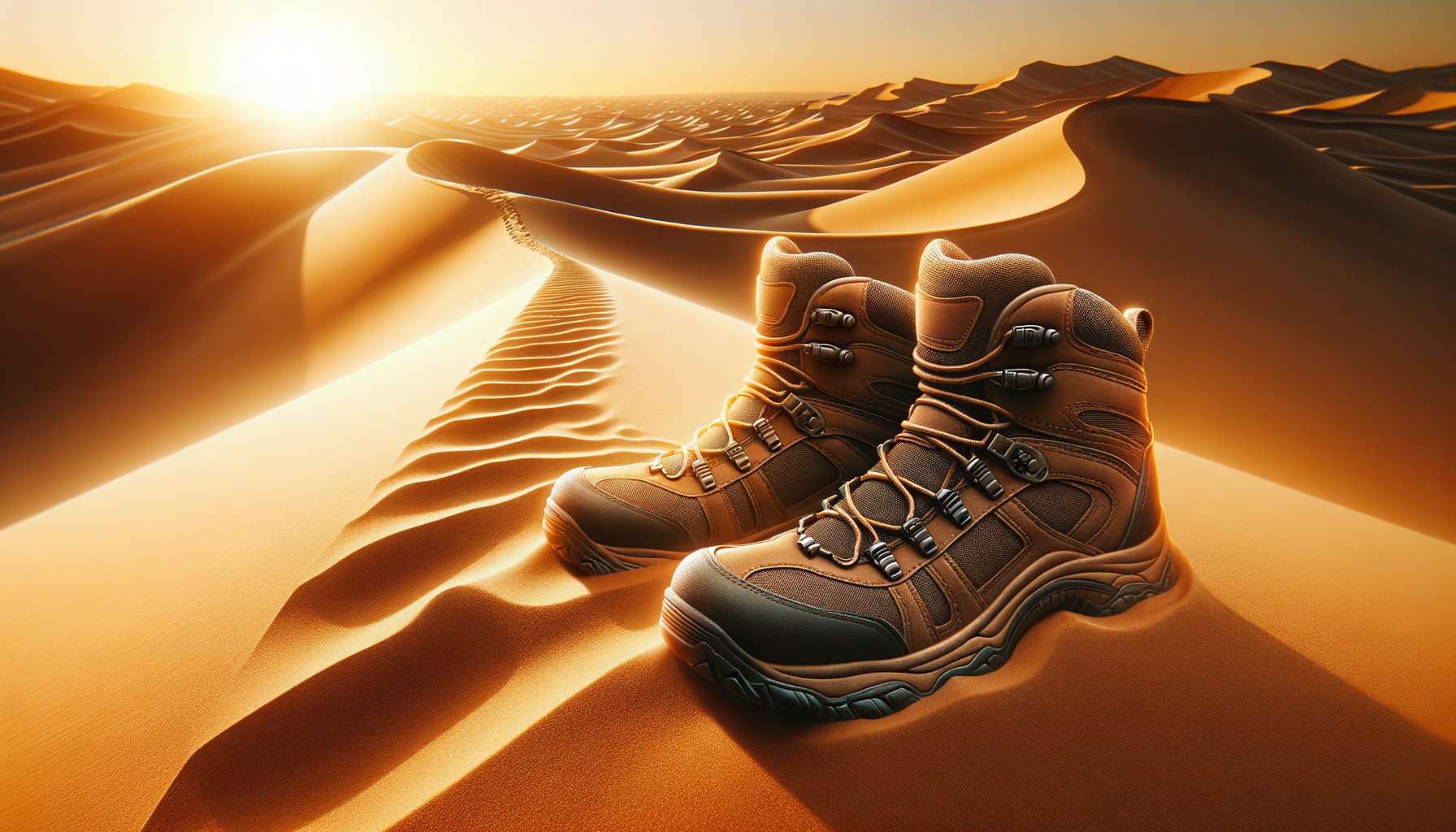Dressing for the Desert: Essential Tips for Your Arid Adventure

Updated 4 months ago
Dressing for the Desert: Essential Tips for Your Arid Adventure
Deserts are places of extreme conditions — blistering days, frigid nights, and unrelenting sun. Preparing for an excursion into these vast, sandy expanses starts with understanding the environment and dressing appropriately. This guide will help you select the right desert attire to keep you protected and comfortable as you embark on your next arid adventure.
In the desert, the right clothing serves as your first line of defense against the elements. Optimal desert gear strikes a balance between ventilation and protection; it's about managing your body temperature, minimizing sun exposure, and preserving your stamina.
The Fundamentals of Desert Dress
Before diving into specific clothing items, let's cover the essentials of desert wear.
Loose and Lightweight Fabrics
Desert temperatures can soar, making it essential to choose clothing that allows your skin to breathe and your body to regulate its temperature.
Clothing Tip: Seek out loose-fitting, lightweight fabrics. Natural materials like cotton and linen are ideal as they promote airflow and wick moisture away from the skin.
Light-Colored Garments
The color of your clothing can significantly impact your comfort. Dark colors absorb more heat, which can make you feel even hotter.
Style Suggestion: Choose garments in lighter shades like white, beige, or pale pastels to reflect the sun's rays and keep cooler.
Long Sleeves and Pants
While it's tempting to expose more skin in hopes of staying cool, it's actually counterproductive in the desert.
Sun Safety: Wear long sleeves and full-length pants to protect your skin from direct exposure to the sun, which not only causes sunburns but also contributes to exhaustion and dehydration.
The Layering Strategy
Temperature fluctuations in the desert are not to be underestimated.
Layer-wise: Bring a combination of light layers that you can put on or take off as the temperature changes, especially for the cooler evenings.
Must-Have Desert Clothing Items
Now, let's explore the specific clothing items that meet the criteria above.
Headwear
Starting at the top, the right headwear can significantly reduce your exposure to the sun.
- Wide-brimmed hats: These are preferable to caps as they provide 360-degree shade, shielding your face, neck, and ears.
- Headscarves or shemaghs: These versatile accessories can be wrapped around the head and face for additional protection against sun, wind, and sand.

Sunglasses
Your eyes are just as susceptible to sun damage as your skin.
- UV protection: Ensure that your sunglasses provide 100% UV protection to shield your eyes from harmful rays.
Shirts and Tops
Choosing the right upper body wear is crucial for comfort and protection.
- Breathable shirts: Opt for long-sleeve shirts made from breathable fabrics like cotton or specially designed moisture-wicking synthetics.
Pants
Similarly, the right kind of pants can make all the difference.
- Durable materials: Look for light but sturdy materials that won't tear easily on the rough desert terrain.
Footwear
Proper desert footwear is paramount for both comfort and safety.
- Boots or closed-toe sandals: Depending on the type of activity, consider breathable hiking boots or closed-toe sandals with good grip and ankle support.

Accessorize for Functionality
In addition to primary clothing pieces, accessories play an important role in desert readiness.
Gloves
Desert landscapes can be rough; gloves can help protect your hands if you need to climb or handle rugged terrain.
Bandanas
A simple bandana can serve multiple purposes: as a neck protector, a wet cloth for cooling off, or a dust mask.
Planning Your Desert Wardrobe
When preparing for the desert, it's vital to consider the length of your stay, the activities planned, and to check the weather forecast for temperature variations.
- One-day trip: Focus on sun protection and hydration for a short visit.
- Extended stay: Pack versatile layers and consider specialized gear for extreme temperatures.
Concluding Your Desert Dress Guide
Adhering to these suggestions will not only keep you shielded from the desert's extremes but will also increase the overall enjoyment and safety of your experience. If your next question is "Where can I find the right gear?" we've got you covered.
Refer to this guide when packing, and always prioritize your well-being by dressing smartly. If you’re in need of specific products or custom gear recommendations tailored to your desert journey, use our handy calculator to get quotes for the best outfits and gear for your desert adventure. Safe travels, and don’t forget to protect your skin, stay cool, and enjoy the beauty that deserts have to offer.




